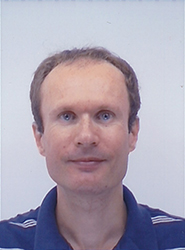Zapart Christopher
Contact

- Position:
- CDS - Observatoire astronomique de Strasbourg, FrancNAOJ - National Astronomical Observatory of Japan, Mitaka, Tokyo, Japan
- Address
- Japan
Miscellaneous Information
- Miscellaneous Information
-
Abstract Reference: 31067
Identifier: D7
Presentation: Demo Booth organisational
Key Theme: 8 Other
ALMAWebQL v2: a modern interactive client-server architecture for fast previewing of large ALMA datasetsAuthors:
Zapart Christopher, Shirasaki Yuji, Ohishi Masatoshi, Mizumoto Yoshihiko, Kawasaki Wataru, Kobayashi Tsuyoshi, George Kosugi, Eguchi SatoshiWe demonstrate a re-designed version 2.1 of the ALMA WebQL web service - available through the JVO ALMA FITS archive - which allows users to preview ALMA FITS files of any size without having to download large amounts of data to user PCs. Large FITS files (i.e. > 20GB) can be previewed smoothly in a web browser running on a relatively low-spec client PC. Users can interactively zoom-in to selected areas of interest with the corresponding frequency spectrum updated in near realtime (network connection-dependent). At a glance users gain access to large images as well as the corresponding frequency spectra that are visible both at the same time.
The ALMA WebQL service adheres to a modern client-server architecture. A fast FITS processing web application server runs a custom C/C++ HTTP daemon developed in-house on top of the open-source GNU libmicrohttpd C library. The client (a web browser) is a rich interactive internet application built on AJAX, HTML5 and SVG standards. In order to facilitate fast on-demand viewing of large ALMA datasets, FITS files are cached locally using NVMe PCI Express Solid State Drives housed in the ALMA WebQL server. Large FITS files can therefore be loaded by the ALMA WebQL application at speeds over several gigabytes per second.
The latest version 2.1 gives a choice of different colourmaps, printing support (works best in Firefox), automatic integration with the Lovas molecular database, disabling Y-Axis autoscale, synthesized beam overlay and manual reference frequency/source velocity corrections.



